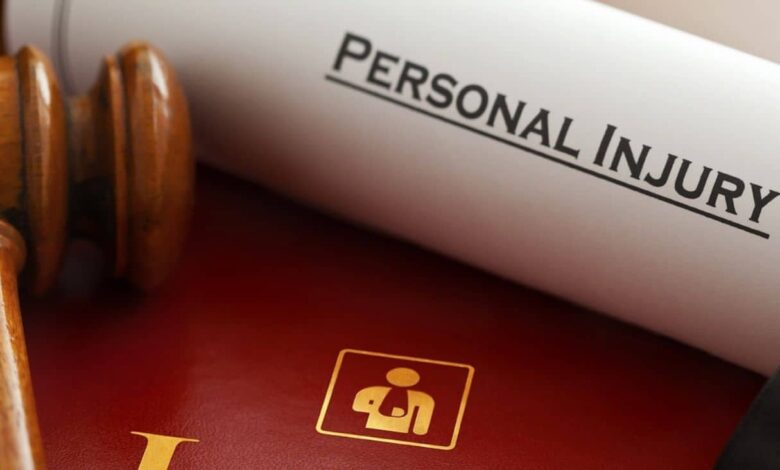Everything You Should Know About Personal Injury Claims

If you have been injured in an accident that wasn’t your fault, where do you begin? Well this handy guide on everything you should know about personal injury claims is not a bad place to start.
Below we’ve covered all the basics of claiming against a third party including what types of accident you can claim for, who owes a duty of care when, and a short overview of the claims process.
Before deciding whether or not to pursue a claim, you should seek appropriate legal advice. This is a very easy thing to do as most law firms operate advice lines so you can get in touch whenever is convenient for you.
What Accidents Can A Personal Injury Claim Cover?
A personal injury claim can cover a range of accidents from car crashes to workplace incidents. In the headings below, we examine each type of accident, as well as medical negligence to give you a better idea of when a claim could be made
Road Traffic Accidents
Road users, which includes everyone from pedestrians up to the drivers of HGVs and construction vehicles, owe a duty of care to each other. This duty requires that they do everything within their reasonable power to avoid causing harm to each other. Upholding the duty of care is done by adhering to the standards set down by the Highway Code and Road Traffic Act 1988.
So, when a road user does not meet those standards, others, as well as themselves, are at risk of injury. To initiate the claims process after a crash, contacting experienced road traffic accident lawyers is a crucial first step toward understanding your rights and securing the compensation you deserve for your injuries and losses.
Public Place Accidents
The party in control of a public place, legally referred to as an “occupier,” must take steps to ensure the reasonable safety of any visitors to the area they are in control of. This is a legal requirement imposed by the Occupiers’ Liability Act 1957.
An instance of this would be a damaged restaurant terrace. A damaged section of decking had been reported by staff but management had failed to take steps to conduct a repair and no warning sign was placed. While you were heading to your table, you stepped on the damaged board and fell, badly twisting your ankle. If you were to approach a law firm following such an accident, you’d be put in touch with a slip and fall accident lawyer following your initial assessment.
Workplace Accidents
The Health and Safety at Work etc Act 1974 requires all employers to take reasonable steps to ensure employee safety. Now “reasonable” can cover a huge number of things and this will vary between workplaces as safety standards differ. Construction workers require much more protective gear than teachers for example.
A workplace accident could occur if the protective gear provided was not up to standard. If you were working on a building site with an inadequate hard hat, a falling object from a scaffolding platform could cause you a serious head injury.
Medical Negligence
Medical negligence is deemed to have occurred when a medical professional fails to provide the correct standard of care to their patients, resulting in avoidable harm. Regardless of specialism or experience level, every medical professional must meet the expected standards.
So, if a GP saw clear signs of cancer during a physical exam, did not refer you for further tests and then the cancer spread causing avoidable harm, this would constitute medical negligence.
How Is Liability Determined For Personal Injury Claims?
Liability is determined in personal injury claims by examining the evidence and assessing whether or not there has been a breach of duty. A solicitor can assist you in this regard by helping you gather evidence that shows this legal responsibility was not met.
We’ve summarised how liability is determined here:
- Did the third party owe a duty of care? A duty of care is a legal responsibility for another’s safety.
- Was there a breach of this duty? Did the action or inaction of the third party mean their legal obligations were not met?
- Did this breach cause injury to another person or persons? Negligence occurs where a duty of care is breached, resulting in some form of harm.
Common Injuries Sustained In An Accident
Data collated by the Health and Safety Executive (HSE), shows that the most common injuries in the work place were sustained in slip, trip and fall accidents, followed by manual handling injuries and being struck by moving objects.
In terms of road collisions, 128,375 casualties were recorded in 2024. Of that figure, 29,537 were killed or seriously injured (KSI) cases with 1,633 of those being fatalities. More than half of these total casualties were car occupants at 70,109, with motorcyclists being the next highest group at 15,952. However, last year’s data shows that statistically, motorcyclists are twice as likely to experience fatal accidents as car occupants.
How Is Personal Injury Compensation Determined?
Personal injury compensation for the injuries themselves is determined by examining the medical evidence alongside the Judicial College Guidelines (JCG). This publication contains guideline payout brackets for both physical and psychological harm and solicitors can use these brackets to help determine a potential compensation figure.
Financial losses are calculated from the evidence you provide. So if you’re injuries have caused you to experience:
- A loss of earnings due to time off work.
- Domestic care costs, if you are unable to carry out daily activities safely on your own.
- Medical bills, including any prescriptions, therapies, or other treatments.
- Transport expenses.
- Bills relating to home adaptations such as ramps, stairlifts or an accessible shower,
Then you will need to present all the related documentation to your solicitor so a figure can be determined.
Physical and psychological harm is compensated under general damages, and financial losses come under special damages. Of these two heads of claim, it is very common to see special damages figures which are much higher, as the compensation accounts for both past and future losses. In cases where serious injuries have been sustained, this may require many years of treatment, care, and support. In case of a head injury, the long-term impact and severity, a primary concern for victims is understanding how much compensation for head injury they might be entitled to, which directly relates to the extensive medical costs, lost earnings, and emotional distress involved.
What Is The Process For Claiming Personal Injury Compensation?
The process for personal injury compensation typically begins for most people when they consult with a law firm to determine if they have a valid claim. If they do, they’ll be connected with the right solicitor for their particular accident.
The personal injury claims process will follow the Pre-Action Protocol for Personal Injury Claims. These are the civil procedure rules specifically for personal injuries; there is a different protocol for clinical disputes.
We have summarised the key steps in the protocol here:
- Letter of Notification: The Letter of Notification informs the defendant that a claim is likely to be made against them. This gives the defendant time to conduct their own investigations.
- Rehabilitation: all parties involved should determine right away if the claimant requires any rehabilitation or other medical treatments.
- Letter of Claim: The Letter of Claim tells the defendant that legal action is being taken against them. This Letter should provide a summary of the facts, what injuries and financial losses were sustained and on what grounds the claim is being made.
- Response: Defendants have 21 calendar days to reply to a Letter of Claim. The defendant then has 3 months to investigate the matter and admit or deny liability.
- Documents: All parties should disclose any documents containing relevant information to the dispute.
- Experts: Both parties are encouraged to jointly select experts and share information.
- Alternative Dispute Resolution (ADR): ADR methods are means of settling disputes without the need for trial. This could be a mediation (a third party facilitates a resolution) or an arbitration (where a third party decides the dispute) for example.
The protocol is designed to give maximum opportunity for disputes to be settled without the need for a trial. However, if a trial proves necessary, the solicitor will find a suitable barrister to present your case before a judge.
Getting The Right Help With A Personal Injury Claim
Getting the right help with a personal injury claim is as easy as contacting a law firm or claims management company and checking if you have valid grounds to claim. If your claim is valid, the advisor you spoke to will find the right solicitor for you.
While it isn’t a legal requirement to use a solicitor’s services, there are definite benefits to doing so. Having a highly trained and experienced legal professional in your corner will give your potential claim the best chance of success.
Here are just some of the services a solicitor can provide, and ways in which they can support you during the claims process:
- Receive any medical treatment, rehabilitation, occupational therapy or counselling you might need by referring you to relevant specialists.
- Helping you collect supporting evidence.
- Determining a fair compensation figure, including any financial losses.
- Helping you understand exactly what is happening with your claim by explaining all the tricky legal language and keeping you informed of all developments.
- Negotiating a settlement with the defendant’s representatives on your behalf.
- Finding a suitable barrister to present the case in court if the claim proceeds to trial.
So, rather than doing all that by yourself, a solicitor will conduct many key tasks for you and guide you through the others. That support will be key to giving your claim the best chance of success and getting you the compensation you deserve.



